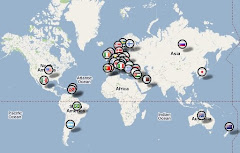Let me put this forward: I was born and raised in a dictatorship in my early years of childhood. I type this in as a reminder upon reading today's news that Soviet Union mk2 has come ever closer to manifestation. But before the story could get a darker twist, let us get on a more idle level of pondering and plunge ourselves into a bit more pleasing topic: cars. Communist car, that is.
I remember clearly as day standing outside no. 77 at the edge of the crowd, holding my mother's hand as a six year-old, looking at a police motorcycle and the German shepherd dog sitting next to some giant-looking police officers. I had no idea at the time but I was part of history happening at large. It was October, 23rd and we were listening to speeches at the very first free commemoration of the Hungarian Revolution of 1956, outside Imre Nagy's birthplace, one of the key figures - and martyr - of the revolt, marking the occasion dropping the affix "People's" from the front of "Republic of Hungary".
Although I have had vague memories of preceding times, the physical evidences of past history still surrounded us as a memento of times, and to an extent they still do - most importantly in the minds of people.
One of those evidences I grew an extensive affection to in general were cars. Cars that were represented by about ten regular makes and about fifteen types altogether, serving as the only consumer choices ranging territorially from the middle of today's Germany to the Pacific Ocean. Lada, Moskvitch, Skoda, Trabant, Wartburg, Polski, Yugo, Dacia and some oddball and rare makes and types that were either available to government officials only or types that no one ever bothered to buy, they were so bad - even by contemporary standards.
Most of these cars were badge-engineered vehicles with some further development imposed on them to withstand the cruel Eastern Bloc environment. All Lada models were based on the Fiat 124, the Polski Fiat 125 and 126 were virtually the same as their Fiat counterparts, with all the Yugo cars deriving from Fiats, too. The Dacias were just mere Renaults with even more shabby build, leaving virtually the Eastern German and Czechslovakian car industry doing relevant R&D.
There was this thing at the time, called the Comecon, where Moscow virtually decided which country would produce what products, thus when these factories were established all around the Communist bloc, Hungary was left with building buses.
What were these cars like? By almost all standards quite bad. Well, not all of them, but you didn't expect miracles sitting into one. Owning and able to afford a car was a miracle itself in the earlier years. As I put it in the preface, all these factories supported the needs of two half-continents with cars, so there were long waiting lists at the official - and national - dealers for these. It is almost impossible to imagine nowadays that people often waited seven (7!) years for such a box of excrement as a Trabant, which incidentally caused the effect used cars being evermore expensive as new cars. For one, there were almost no used cars at the time and potential buyers were pushing the prices up and up just to get a car instantly. If you had connections within the Party (as
The indisputable champion of Communist cars was the Lada. More rugged and slightly better construction than the original Fiat 124, it was the obvious choice for those who wanted to get any horsepower for their money. Therefore it quickly became popular among the slowly developing racing and rallying community. It was so popular that the Soviet Union developed the Communist bloc's only worthwhile Group B rally car of it, the Lada VFTS.
Other sporty cars included the Skoda 130LR that went into the history book, as the other Group B rally car.
But the non-plus ultra sporty consumer Skoda was the 130 Rapid.

Two-door fastback, rear-engine, rear-wheel drive. Want? Wait for this one, its predecessor, the earlier-generation 130RS:
Although the Ford Escort was the one entitled to put out a "Mexico" edition due to winning the infamous London-Mexico rally marathon, there were a number of Moskvitch 412s in the field, most of them finishing the rally just outside the top ten.
_-_Moskvitch_2140.JPG/1024px-Rally_Bohemia_2012_(historic_show,_SS3_Sychrov)_-_Moskvitch_2140.JPG)
Other motorsports pedigrees included the engine, which was an aluminium copy of the BMW M10 engine - which served in many racing cars, most notably as the turbocharged powertrain of the Gordon Murray-designed Brabham F1 cars.
What happens when you combine the worst of a Mini and a contemporary Saab? You get the Trabant, which - despite all the wrongdoings - turned out to be a decent rally car, where you were able to learn more about car control than anywhere else.
The truth is that people will always race whatever they will get their hands on. Never mind turbocharged V6 engines or electric formula cars. Awesomeness will always come from the drivers in the first place. Even at places and times you'd never expect.
If you liked what you saw, I recommend this post, too.
This article also appeared on Oppositelock and Jalopnik.













ReplyDeletemobile mechanic reading
mechanic near me
mobile mechanic near me reading
thanks for sharing your thought with us car service near me
ReplyDelete